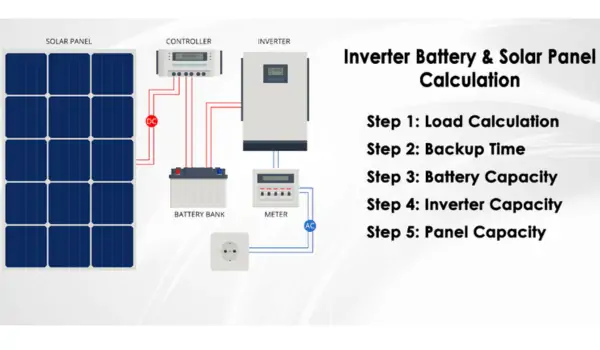Residential solar panel capacity
Solar panel capacity refers to the amount of electricity a solar panel can produce under standard conditions. It is usually measured in watts (W) or kilowatts (kW). The capacity of a solar panel is an essential factor to consider when installing solar panels for residential use.
It is essential to understand the capacity of solar panels for homeowners as it determines the amount of electricity that can be generated from the solar panel. Understanding the capacity of solar panels can help homeowners determine the number of solar panels needed to power their home adequately, as well as the cost of installation and maintenance.
Installing solar panels with appropriate capacity for homes has several benefits. Firstly, it can reduce or eliminate electricity bills by generating electricity from a renewable source. Secondly, it can increase the value of the home as solar panels are considered a valuable asset.
Factors that affect solar panel capacity
The type and quality of solar panels used can significantly impact the capacity of a solar panel system. High-quality solar panels tend to have a higher capacity and are more efficient at converting sunlight into electricity.
The area and angle of the solar panels can also affect their capacity. Solar panels should be placed in an area that receives maximum sunlight throughout the day.
Temperature and weather conditions can also affect the capacity of solar panels. High temperatures can decrease the efficiency of solar panels, while cooler temperatures can improve their performance.
The electrical configuration and design of the solar panel system can also impact its capacity. Factors such as the number and size of the solar panels, the type of inverter used, and the wiring and installation can affect the capacity of the system.
Understanding solar panel capacity
To understand solar panel capacity, it is important to define key terms such as wattage, voltage, and current. Wattage (W) is a measure of power and represents the rate of energy transfer. Voltage (V) is the measure of the electrical potential difference between two points, while current (I) is the flow of electrical charge.
The capacity of solar panels can be calculated by multiplying the wattage (W) of a solar panel by the number of solar panels in the system. For example, if a solar panel has a wattage of 300W and a homeowner installs ten panels, the total capacity of the system would be 3,000W or 3kW.
Selecting the right capacity of solar panel system for a home is important to ensure adequate electricity production.
Types of solar panels for residential use
Monocrystalline solar panels are made from single silicon crystals and have a high level of efficiency and durability. They have a dark color and a uniform appearance, making them a popular choice for residential use.
Polycrystalline solar panels are made from multiple silicon crystals and have a lower level of efficiency than monocrystalline panels. They are less expensive to produce and have a blue color due to the less uniform appearance of the crystals.
Thin-film solar panels are made from a thin layer of photovoltaic material and can be flexible, lightweight, and easy to install. They have a lower level of efficiency than crystalline panels but can be a good option for certain installations where space or weight is a concern.
Bifacial solar panels have a unique design that allows them to capture sunlight from both sides of the panel, increasing their energy production.
Benefits of installing solar panels with appropriate capacity
Installing solar panels with appropriate capacity ensures optimal energy production for a home’s needs. With the right capacity, a solar panel system can generate enough electricity to meet a home’s energy demands, reducing reliance on grid-supplied electricity.
Solar panels with appropriate capacity can also lead to a faster return on investment. When a solar panel system generates enough electricity to meet a home’s energy needs, the homeowner can see a quicker return on investment through energy savings and potential incentives such as tax credits.
By generating their own electricity, homeowners with appropriately sized solar panel systems can significantly reduce their utility bills. This can result in significant cost savings over the lifespan of the solar panel system.
In addition to the financial benefits, appropriately sized solar panel systems can also have a positive impact on the environment. By reducing reliance on grid-supplied electricity, homeowners can help reduce carbon emissions and other harmful environmental impacts associated with traditional power generation.
Tips for determining the right solar panel capacity for your home
To determine the right solar panel capacity for your home, consider your household’s energy consumption. Review your utility bills to identify your average monthly energy use and peak usage times.
Evaluate the peak sun hours in your area. Peak sun hours refer to the number of hours each day when the sun’s energy is strong enough to generate electricity efficiently.
Consult with solar panel experts to determine the right solar panel capacity for your home. Experienced solar installers can assess your energy consumption, evaluate your home’s sun exposure, and recommend the appropriate solar panel system to meet your needs and goals.
Determine your budget and financing options. The cost of solar panel installation can vary depending on the size of the system and other factors.
Conclusion
The importance of solar panel capacity for residential use cannot be overstated. The size of the solar panel system directly affects the amount of electricity generated, which in turn impacts the cost savings and environmental benefits. We encourage homeowners to carefully evaluate their energy needs and work with a reputable solar panel installer to choose the appropriate system capacity.
Finally, the future of solar energy looks bright, and it has the potential to revolutionize residential power. With advancements in technology and the increasing affordability of solar panels, more households are adopting solar energy.




